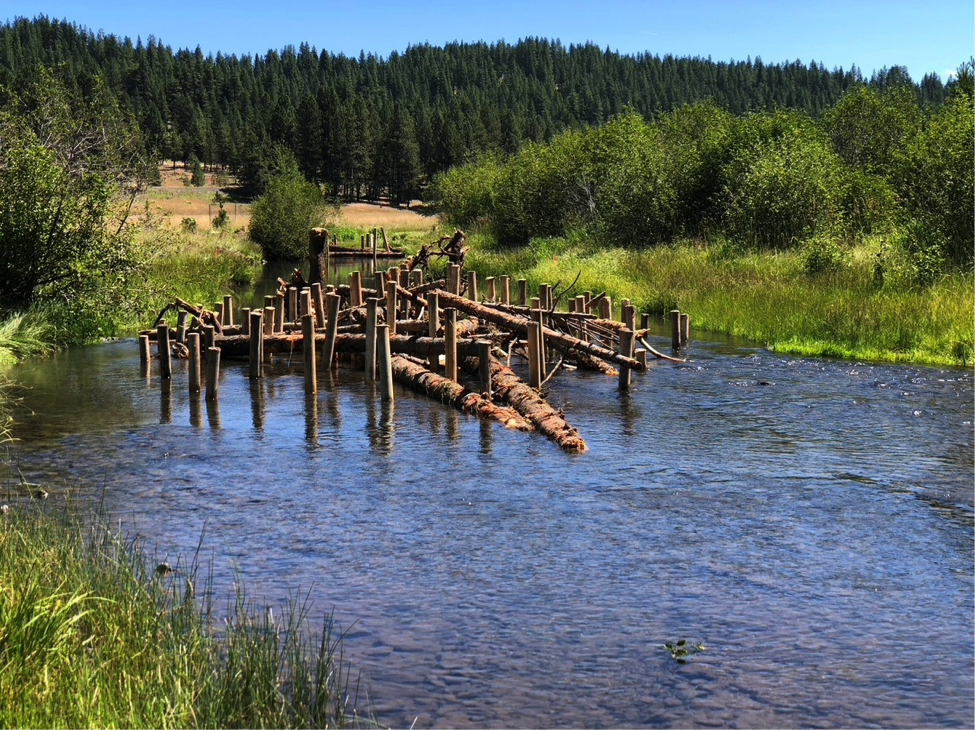|
By Kasey Bliesner MFIMW partners recently completed Phase II of the Vincent to Caribou habitatdisrupted natural channel migration patterns, were removed. To improve and increase more natural instream fish habitat, some of the The project installed or placed 700 cubic yards of gravel, and added roughly 600 trees across 80+ structures. 20 pilot channels were also excavated to better allow the river to access the flood plain during high flow events. For this project, CTWS employed innovative, low cost, low impact methods to place and anchor these large wood structures, replacing the more invasive practice of burying portions of the wood in streams banks for anchoring. Burying portions of the wood in stream banks isn’t natural, is slow and expensive, creates a lot of turbidity, and exposes disturbed ground to weeds and erosion. With the Phase II methods, most wood is simply placed on the ground without excavation (as natural tree-falls would occur), and wood structures are stabilized with posts. These posts are intended to stabilize wood structures in the short-term, while allowing for more natural large-wood movement and function processes in the long-term. This project also consists of several riparian enhancement elements. Several studies performed throughout the MFIMW over the last 12 years have identified elevated summer stream temperature as the largest factor limiting productivity of salmonids in the Middle Fork John Day River, and that this factor is mostly facilitated through solar exposure due to lack of shade relief from riparian vegetation (See Shading Out Climate Change: Planting Streamside Forests to Keep Salmon Cool). In effort to improve riparian condition and function, CTWS will be installing three riparian vegetation enclosures to protect over 55 acres of riparian area, as well as planting approximately 3,000 sedges and over 4,000 woody species such as Cottonwood, Alder and Willow in 2020. The lead for this project is the Confederated Tribes of Warm Springs and partners include the Bureau of Reclamation, Bonneville Power Administration, Pacific Coastal Salmon Recovery Fund (NOAA), and Oregon Watershed Enhancement Board.
0 Comments
Leave a Reply. |
IMW News Updates
Archives
September 2022
Categories |


 RSS Feed
RSS Feed
